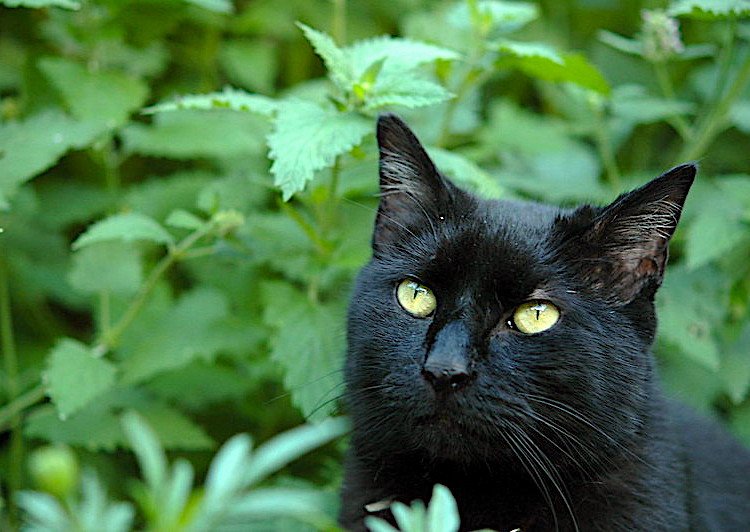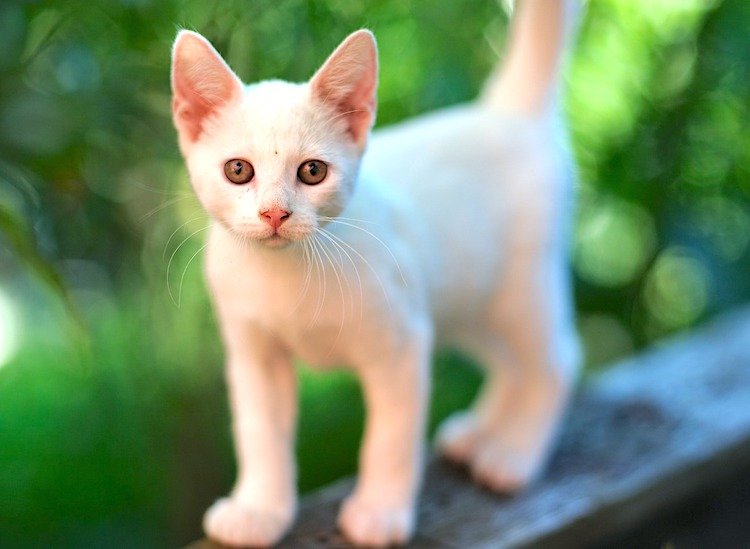
This pet health content about “Can cats overdose on catnip” was written by a veterinarian, Dr. Debora Lichtenberg, VMD. This article was originally published in 2013 and is regularly updated. It was last reviewed for accuracy and updated on June 21, 2024
If you have questions or concerns, call your vet, who is best equipped to ensure the health and well-being of your pet. This article is for informational purposes only and is not a substitute for professional medical advice, diagnosis or treatment. See additional information.

- Can Cats Overdose on Catnip? Exploring the Safety and Reactions
- Understanding Catnip: What Is It and How Does It Affect Cats?
- Pleasurable Olfactory Stimulant: Why Catnip Smells So Good to Cats
- Not All Cats Respond to Catnip
- Behavioral Changes Induced by Catnip
- Is Catnip “Toxic”?
- Understanding Catnip Poisoning in Cats
- Catnip’s Long History
- The Cat Gardener
- Forms of Catnip for Your Cat’s Enjoyment
- Frequently Asked Questions (FAQ)
- References
Can Cats Overdose on Catnip? Exploring the Safety and Reactions
Most cats love catnip — and the good news is that catnip is safe. The occasional use of catnip is safe and recommended as a lifestyle enhancer by feline experts and behaviorists.
But can cats overdose on catnip? No, cats cannot overdose on catnip.
However, reactions can occur. We’ll discuss this below, so keep reading.
Understanding Catnip: What Is It and How Does It Affect Cats?
Catnip (Nepeta cataria) is a perennial herb of the mint family.
- Main Ingredient: Nepetalactone is an essential oil and the primary component that attracts cats.
- Other Names: Catmint, catsup, catwort, nip, new, and field balm. These names highlight the plant’s strong attraction to cats.
- Effects: Catnip causes neurologic changes in cats and is considered a mild hallucinogen.
- Recreational Use: Catnip’s effect on cats is best defined as a nonaddictive recreational drug for cats.
- Chronic Exposure: Some people believe chronic exposure to catnip may lead to an apparent loss of mental faculty in their cat.
Usage Recommendations:
- Occasional Use: Common sense dictates catnip should be used occasionally. The overall recommendation is to offer your cat a small amount of fresh catnip every 2 weeks or so.
- Catnip Toys: Catnip toys are safe, and most cats lose interest in the toy after a few minutes. If your cat seems obsessed with the toy, take it away after 10–15 minutes and give the cat a rest.
For more detailed information about catnip toys, check out this link.
Pleasurable Olfactory Stimulant: Why Catnip Smells So Good to Cats
Cats use their sense of smell to perceive and interpret their world to a far greater degree than humans do. Learn more about their sense of smell.
- Attractive Scent: Catnip may be one of the most pleasant and attractive scents in the world to many cats. The nepetalactone in catnip binds to their olfactory receptors.
- Other Pleasant Plants:
- Honeysuckle wood
- Valerian root
- Silver vine
- Ornamental catmint (Nepeta curviflora)
All these garden plants are safe for cats. Explore common garden plants that are safe for cats.

Not All Cats Respond to Catnip
The literature states that up to half of cats do not respond or react to catnip. This ability to smell or not smell catnip is hereditary.
- Age Factor: Kittens do not respond to catnip until they are at least 9 weeks old. Some cats need to be older before they get pleasure from catnip.
- Variable Effects:
- In some cats, catnip acts as a depressant rather than a stimulant.
- Researchers hypothesize that cats who recline or maintain a sphinx-like position after exposure to catnip may be in a hallucinogenic state.
- Alternative Plants: Interestingly, one study found that cats who did not respond to catnip scent reacted positively to:
- Silver vine (75% of cats)
- Tatarian honeysuckle (33%)
Both of these plants also contain nepetalactone, the active compound in catnip.
Behavioral Changes Induced by Catnip
Your cat may exhibit some or all of the following behaviors after exposure to catnip:
- Physical Reactions:
- Head shaking
- Rubbing chin and cheeks on the plant
- “Head-over” roll and body rub
- Hallucinations: How can we tell?
- Spontaneous Vocalization: Learn more about cat vocalizations
- Euphoria: This is challenging to quantify.
- Sphinx-like Position
- Aggression
- Excitement
- Depression
- Burst of Energy
The “high” or behavioral change induced by catnip usually lasts 10–15 minutes. Most cats seem to lose interest in the plant after their 15-minute episode, possibly self-regulating their transient drug-induced behavior.

Is Catnip “Toxic”?
A large amount of ingested catnip may cause vomiting or diarrhea. This is usually mild and self-limiting. Most cats don’t eat enough catnip to make them sick. Learn more about vomiting and diarrhea in pets.
Catnip clearly causes neurologic signs, either stimulation, depression, or alteration. Again, these episodes are short-lived (10–15 minutes) and self-limiting.
- Aggression: Some cats show aggression after exposure to catnip. If you already have a cat prone to aggressive behavior, catnip may not be a good idea.
- Pregnancy: Catnip is a uterine stimulant, so it is not recommended for pregnant queens. Historically, catnip was used in women to bring on contractions.
- Seizures: Catnip increases susceptibility to seizures in rats, so catnip may be contraindicated in epileptic cats.
Some websites include mint as toxic and talk about catnip as possibly toxic. Veterinary toxicologists note that anything can be toxic if enough is consumed. “Toxic” in this sense does not mean the plant makes a cat deathly ill but may bring on some uncomfortable symptoms.
Understanding Catnip Poisoning in Cats
While cats cannot overdose on catnip in a life-threatening way, ingesting large quantities can lead to discomfort or mild toxicity, commonly referred to as “catnip poisoning.” Here’s what you need to know:
Symptoms of Catnip Poisoning:
- Gastrointestinal Issues:
- Vomiting
- Diarrhea
- Neurological Signs:
- Excessive drooling
- Drowsiness or lethargy
- Disorientation
- Behavioral Changes:
- Aggression
- Hyperactivity followed by fatigue
What to Do If Your Cat Shows Symptoms:
- Remove Access: Immediately remove any remaining catnip to prevent further ingestion.
- Monitor Symptoms: Keep a close eye on your cat’s behavior and physical condition.
- Consult Your Vet: If symptoms persist or worsen, contact your veterinarian for advice. They can provide guidance on whether your cat needs medical attention.
Although catnip poisoning is rare and usually not severe, it’s essential to be aware of the signs and take prompt action if necessary.
Was YOUR Pet Food Recalled?
Check Now: Blue Buffalo • Science Diet • Purina • Wellness • 4health • Canine Carry Outs • Friskies • Taste of the Wild • See 200+ more brands…

Catnip’s Long History
People have used catnip for centuries, but its usage has largely been replaced by more effective drugs.
Historically, catnip has been used in various forms:
- Catnip Tea: Drunk as a tea.
- Smoked: Used in a manner similar to smoking.
- Poultice and Topical Use: Used as a poultice and applied topically.
Historical Uses:
- Stimulant
- Depressant
- Infant Colic, Flatulence, Hiccups: Learn more about flatulence in pets
- Reproduction, Menstruation, and Childbirth in Women
- Toothaches
- Whooping Cough and Measles
- Cold Remedy
- Hives
- Rheumatism
- Asthma
Catnip was used as a replacement for marijuana in the 1960s or as a filler in marijuana. People were even buying catnip toys and using the catnip stuffing to get high. Its usage declined as marijuana became more readily available.
Ready for some lighthearted fun? Check out this compilation of clips showing what happened “when the catnip kicked in”:
The Cat Gardener
Catnip is easy to grow in most climates. In fact, it grows like a weed, so be careful where you put it as catnip can be invasive.
- Growth Cycle: The plant is a short-lived perennial and comes up in your garden from late spring through autumn.
- Variety of Nepeta Plants: There are a wide range of ornamental plants in the Nepeta family. These plants have fun names like Cat’s Pajamas and Cat’s Meow Catmint.
I planted a new Cat’s Meow Catmint in my garden a few weeks ago. It was a tender new plant, so I was amazed at its resilience when my cat rubbed himself all over it one day after planting. It leans a bit to the left now but should overwinter fine and come back stronger in the spring.
- Aesthetic Appeal: Catmint plants have a wonderful tall lavender flower, and they make a great border or add a touch of English or cottage garden vibe when mixed in with other plants. Easy to grow!
- Comparison with Lavender: Nepeta is easier to grow than lavender and makes a similar statement in a garden. Nepeta species are cat-friendly and deer-resistant. What could be better? A new variety is called Felix. The cat references never get old!
As I did a web search for “Nepeta,” many references to Nepeta Leijon came up. Thinking it was a new species of Nepeta plant, I wanted to buy it. I discovered Nepeta Leijon is actually an adult troll, one of the Twelve Homestuck Trolls.
She looks like a cat-girl, fights for justice, loves animals (particularly cats), and “leijon” is a Swedish word connoting lion or lionhearted. Somebody did their research when naming her!
Forms of Catnip for Your Cat’s Enjoyment
Enjoy your outdoor catnip plants until frost. Mine are still healthy and happy. You can also freeze catnip in a freezer bag or plastic container to preserve the essential oil in the plant.
- Indoor Growing: If you don’t have a garden, you can grow a small catnip plant indoors.
- Organic Catnip: Buy organic catnip or loose catnip. You can put this catnip in a refillable toy.
- Catnip Sprays: Catnip sprays are available and contain a lesser amount of nepetalactone. You can use catnip spray for training purposes, such as spraying a new cat scratch tower, bedding, or steering your cat toward furniture that is cat-friendly, hopefully leaving your new couch scratch-free. Good luck with that!
Frequently Asked Questions (FAQ)
How long can cats overdose on catnip?
Cats cannot technically overdose on catnip, but adverse effects typically last 10-15 minutes.
How much catnip is too much?
Offering catnip in moderation is best; too much can cause mild gastrointestinal and neurological symptoms.
What are the benefits of catnip?
Catnip can provide recreational enjoyment, stimulate playfulness, and offer a mild calming effect for cats.
References
- Bol, Sebastiaan, PhD, et al. “Responsiveness of Cats (Felidae) to Silver Vine (Actinidia polygama), Tatarian Honeysuckle (Lonicera tatarica), Valerian (Valeriana officinalis) and Catnip (Nepeta cataria).” BNC Veterinary Research 13, no. 70 (March 2017). https://bmcvetres.biomedcentral.com/articles/10.1186/s12917-017-0987-6.
- Elliott, Pippa, BVMS, MRCVS. “How to Give Catnip to Your Cat.” WikiHow. June 24, 2019. https://www.wikihow.com/Give-Catnip-to-Your-Cat.
- Grognet, Jeff, DVM. “Catnip: Its Uses and Effects, Past and Present.” Canadian Veterinary Journal 31, no. 6 (June 1990): 455–456. https://www.ncbi.nlm.nih.gov/pmc/articles/PMC1480656/.
- Scherk, Margie, DVM, DABVP. “Optimizing an Indoor Lifestyle for Cats.” 2018 Chicagoland Veterinary Conference.
- WagWalking. “Catnip Poisoning in Cats.” https://wagwalking.com/cat/condition/catnip-poisoning.



